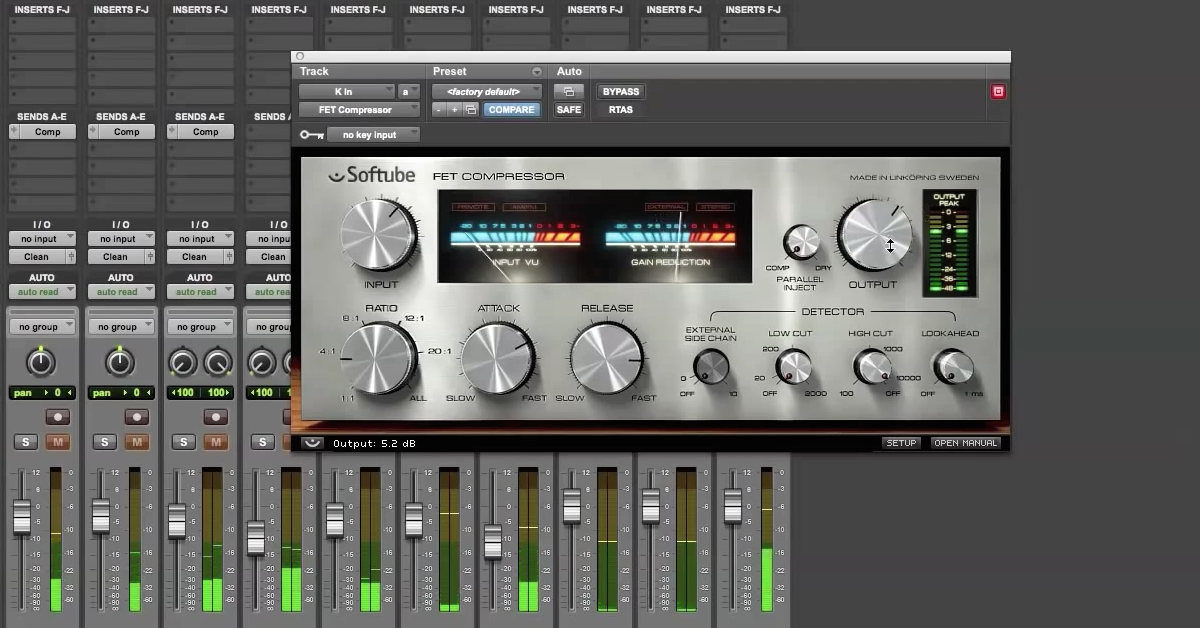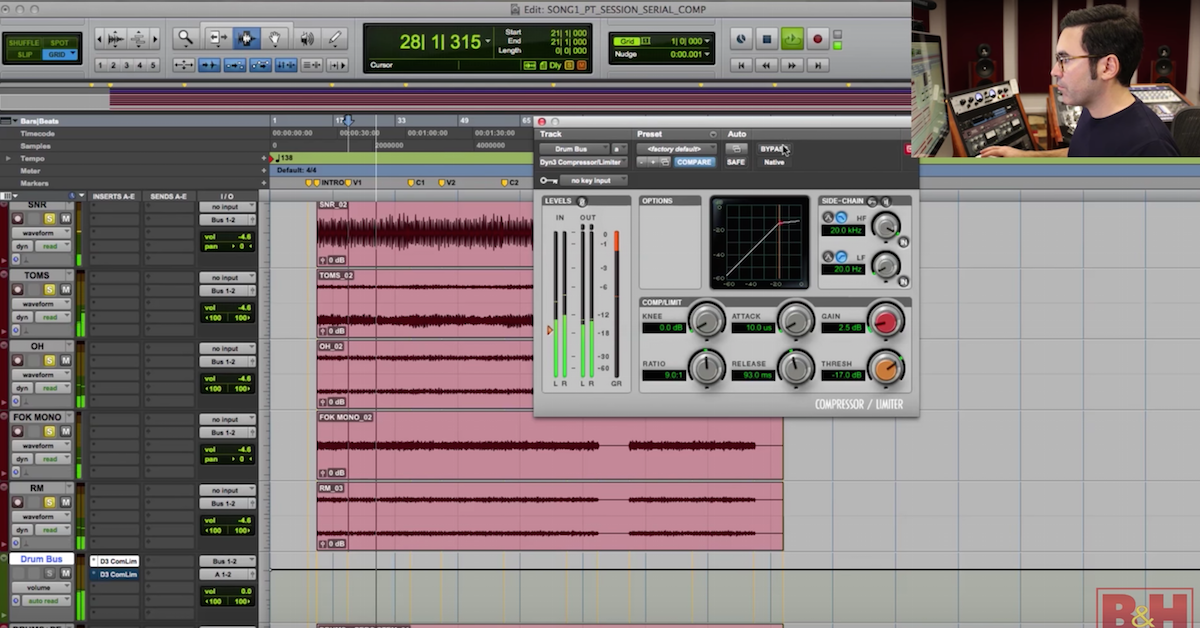5 Ways to Compress Drums in a Mix
Article Content
Compression goes on drums like peanut butter goes on compression. Because compression is better than bread.
Compressors were originally designed to keep stray bursts of audio from over-modulating a broadcast or a recording. Fun enough, drums are basically just bursts of audio — making a compressor’s action most pronounced over this particular element. The time constants and gain shapes show, and in addition, drums take to aggressive signal processing very well.
There are pragmatic approaches to compressing drums, and then there are over-the-top means as well…
1. The Boring (but Important) Stuff
Before getting into the candy let’s have a moment for our vegetables. The primary reasons for placing a compressor on drums are to prevent stray peaks and to even out the player dynamics. For this approach, we want a medium attack and release time. But, what is medium?
Well, when we’re dealing with drums which have very fast envelopes our “medium” is going to be much faster than an element like vocals or bass. In a way, it’s better to describe the result than the setting, because each compressor will act differently and 10ms on one may sound remarkably different than 10ms on another.
What we want is a setting that is fast enough on the attack to catch the peak of the drum, but not so fast that we lose our punch. And no matter what, our attack time is always going to be a negotiation between punch (slower) and control (faster). With release we want to preserve the natural dynamic of the drums, meaning we want to keep the ghost notes, room tones, and cymbal decays from flying up. This approach will keep transient bursts under control as well as even out each measure a bit.
If there’s still too many stray transients either from the capture or just our drummer getting excited, we may need to put a hair of limiting in front of our compressor. Nothing wrong with that.
2. Fattening Drums
Another common, but somewhat more fun purpose of applying compression to drums is to “fatten” (or “phatten” if you are from the 90s) them up. In order to do this we need a very fast compressor, one that’s capable of acting over the very quick envelopes of the individual drum.
This process involves timing the attack and release very carefully. Our goal is to make the compressor reshape the sound to effectively turn up the “sustain”, that is “the body”, of the sound, without softening the “attack” or “punch.”
For this approach, we’re going to want to go pretty fast on the attack and pretty fast on the release, and we’re going to do this on the close mics. The key in the release is going as fast as possible without causing any weird artifacts. For a lot of compressors, this will be the fastest setting possible but for some compressors like FET style comps (1176s for example), we may need to back the speed off a hair.
3. Bring Out Room
This third most common and proportionately fun idea behind compressing drums is to bring out the room tones.
This can be done by either using a very slow attack and fast release on close mics, or, by using very heavy compression on the room mics or overheads. The latter creates a bombastic effect that brings a lot of tone and energy into the sound, which can be good or bad depending on the desired effect. The neat effect of using this approach is that you can take a small room recording and make it sound significantly bigger. Sometimes it can be really cool to absolutely nuke the room mics and make a cavernous sounding space.
4. Pumping & Overcompression
Piggybacking off of how we can compress room recordings, we can do similar things with the overall kit. Sometimes just laying heavily into a compressor feels really cool. This works well if we take similar settings as we did when compressing for player dynamics, but turn the ratio way up or turn the threshold way down (or both).
Suddenly the compressor starts to move and react to the drums in a unique way. We can create an audible swelling effect that restructures the rhythm and completely changes the vibe of the track.
5. Grinding & Distortion
The real crazy stuff starts happening when we take what a compressor normally does — and don’t do that. Fun things start happening when we work on the extremes of a compressor. Setting the attack and release as fast as possible, using the highest ratios, and really digging in until the compressor starts to feel a little pain can add some serious bite and energy to the sound.
Some compressors can be truly overdriven and create modulation distortion, which is distortion that occurs because the attack and release are happening within the speed of the waveform itself. The 1176 with all of the ratio buttons pushed in, the Eventide Omnipressor, and Spectrasonics 610 all exhibit this quality. The break up adds a really fun distortion that sounds great on dark, aggressive, or gritty sounding records.






